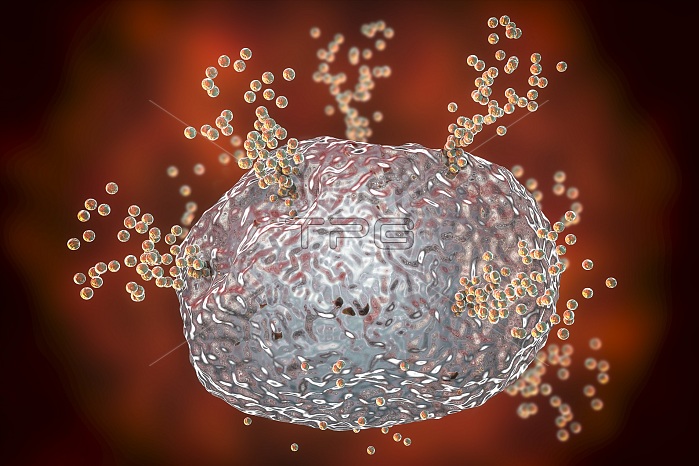
Mast cell releasing histamine during an allergic response, computer illustration. Mast cells are a type of leucocyte (white blood cell). They contain the chemical mediators histamine, serotonin and heparin. Histamine is released from mast cells in response to an allergen, causing a localized inflammatory immune response. When an allergen is encountered, B cells (not seen) produce antibodies which bind to protein receptor molecules on the surface of the mast cell. When two antibodies are cross-linked with an antigen the cell is activated to release its histamine by exocytosis. Histamine causes capillaries to dilate, smooth muscle to contract, and many other effects.
| px | px | dpi | = | cm | x | cm | = | MB |
Details
Creative#:
TPG29042958
Source:
達志影像
Authorization Type:
RF
Release Information:
須由TPG 完整授權
Model Release:
N/A
Property Release:
N/A
Right to Privacy:
No
Same folder images:

 Loading
Loading